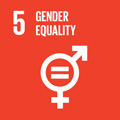- Docente: Olivia Levrini
- Credits: 1
- SSD: FIS/08
- Language: Italian
- Teaching Mode: E-learning
- Campus: Bologna
- Corso: Percorso abilitante in A027 - Matematica e Fisica (cod. 6076)
Learning outcomes
At the end of the course, the student will know: examples of experiences and interdisciplinary paths in the STEM field, built on research results. The student will be able to: analyze teaching activities aimed at building curricula and interdisciplinary teaching experiences, starting from the National Indications, the Guidelines and the Reference Frameworks for State exams.
Course contents
The following will be illustrated and discussed during the course:
-
national indications and theoretical references developed by research in physics education, history and epistemology of physics useful for reflecting on the meaning and role of physics in the analysis of interdisciplinary curricular topics;
-
reference frameworks developed in physics teaching and STEM teaching research useful for building interdisciplinary learning environments and managing forms of co-teaching;
-
references and research results in physics education useful for recognizing learning dynamics and forms of participation in interdisciplinary contexts.
The module will be held in close collaboration with Module 1 and the following will be either introduced or resumed:
- analysis tools of physics as a discipline, deriving from research on the Nature of Science (with particular attention to the Family Resemblance Approach);
- Akkerman and Bakker's (2011) meta-theory on the boundary (concepts of boundary objects, boundary people, and boundary learning mechanisms).
The tools developed by research in Physics Education and STEM Education will be discussed in the context of the birth of physics as a theory (study of motion, role of geometry in the birth of physics as a discipline, parabolic motion).
Readings/Bibliography
During the course, teaching material is provided via Virtual.
The material consists of slides/presentations, research articles, and work material (sheets for individual work and group work, questionnaires,...).
Teaching methods
Interactive lessons, group work, peer-to-peer, co-teaching.
During the course, various types of texts will be analyzed (textbook chapters, research articles, historical-epistemological critical essays) to get acquainted with the different layers of discourse in physics teaching: conceptual/disciplinary, cognitive, epistemological of teaching practice.
Assessment methods
The acknowledgment of the course will be provided by means of the verification of the minimum percentage of attendance and the delivery of any exercises requested during the course. The evaluation of the learning of the teaching contents takes place at the same time as the final test for the acquisition of the qualification to teach in the competition class of the training course, provided for by Art. 9 of the Prime Ministerial Decree of 4 August 2023.
Teaching tools
Slides, research material, videos and various types of multimedia material (educational applets, films, material relating to experimentation of educational paths in secondary school classes, ..).
Office hours
See the website of Olivia Levrini
SDGs


This teaching activity contributes to the achievement of the Sustainable Development Goals of the UN 2030 Agenda.
